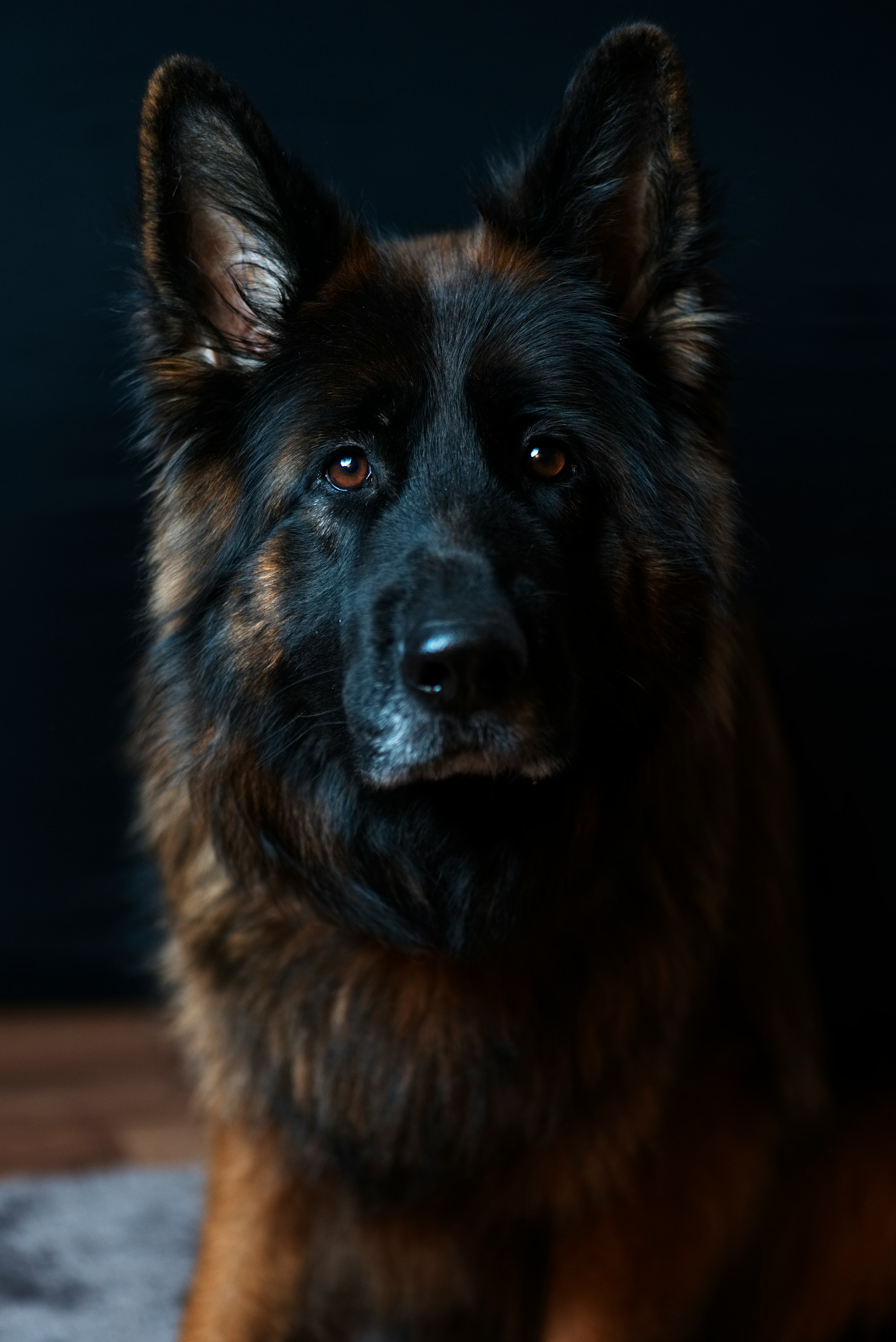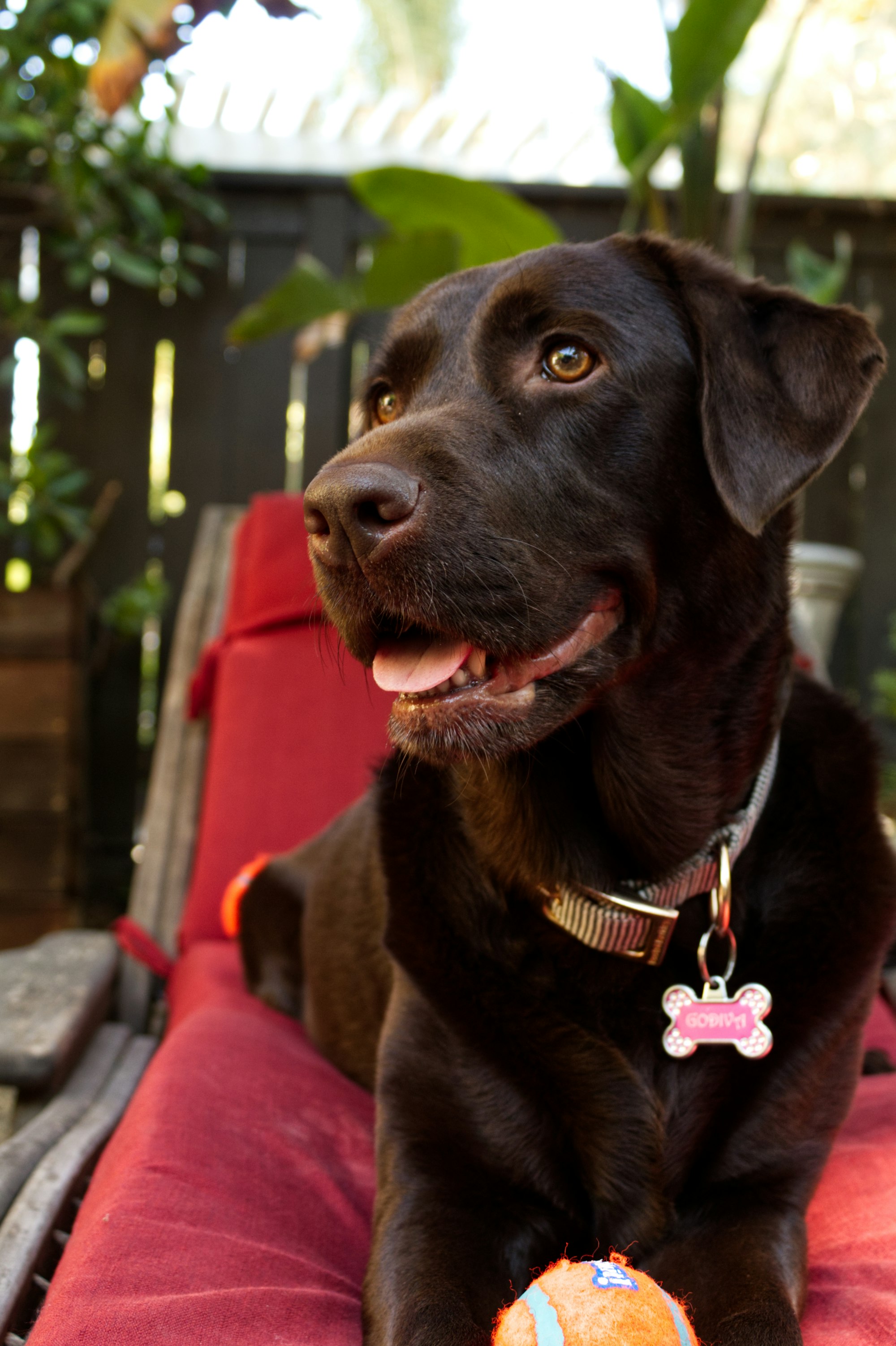Have you ever noticed your once jet-black dog gradually turning brown? This intriguing transformation in a dog's coat color can be puzzling and raise concerns for pet owners. While it may seem like magic, there are scientific explanations behind this phenomenon. In this article, we will delve into the various reasons why your black dog might be undergoing this color change and what you can do to maintain their coat's beauty and health.

Understanding Coat Color Changes in Dogs
When it comes to understanding the enigmatic phenomenon of coat color changes in dogs, it's essential to adopt a discerning perspective. These transformations, often perplexing to pet owners, can be attributed to several factors that shed light on the intricacies of canine genetics and biology.
Genetic Factors:
At the very core of coat color variations in dogs lie the genetic intricacies. Different breeds carry distinct genetic markers, some of which may predispose black dogs to gradual shifts in coloration. It's imperative to acknowledge that not all black dogs share the same genetic makeup, and as a result, some may remain steadfast in their ebony hue while others embark on a journey toward a brownish tint.
Age-Related Changes:
Much like the aging process in humans, dogs undergo their own set of transformations as they grow older. A black dog's coat, once deep and lustrous, can experience a natural lightening effect over time. This aging-related alteration is part of the intricate tapestry of a dog's life.

Seasonal Effects:
Nature's capriciousness can also come into play. Environmental elements, particularly sunlight, can cast a temporary veil over a dog's coat. During certain seasons, the sun's rays may initiate a transitory change in color, causing a black dog to adopt a brownish appearance, only to revert when the seasons shift.
These factors collectively underscore the dynamic nature of a dog's coat color, a blend of genetic heritage, the passage of time, and the influences of the environment. To truly grasp this intricate process, one must appreciate the role these elements play in orchestrating the remarkable transformation from black to brown in our canine companions.
Health Issues and Skin Conditions
When the once ebony coat of a black dog starts to exhibit a disconcerting shift towards brown, it's time to delve into the realm of health issues and skin conditions. These underlying factors can hold the key to understanding this curious metamorphosis.
Allergies:
Allergies, whether due to environmental triggers like pollen or certain dog foods, can wreak havoc on a dog's skin. Persistent itching and scratching can lead to hair loss, inflammation, and a gradual shift in coat color. The relentless pursuit of relief from itching can take a pristine black coat and turn it into a canvas of brownish hues.
Infections:
The scourge of infections, be they bacterial or fungal, is another culprit in the saga of coat color changes. These infections can inflict harm upon a dog's skin, causing not only discomfort but also altering the pigmentation of the fur. It's a transformation driven by the inflammation and hair loss associated with such infections.
Nutritional Deficiencies:
The importance of a balanced diet in a dog's life cannot be overstated. When essential nutrients are lacking, the consequences can be far-reaching. A diet deficient in key vitamins and minerals can lead to lackluster fur and a discolored appearance. The once-striking black coat may fade into shades of brown due to nutritional imbalances.
These health issues and skin conditions serve as cautionary tales, underscoring the vital importance of proactive pet care. Allergies, infections, and nutritional deficits are not merely minor inconveniences; they are transformative agents that can reshape the very essence of a dog's coat. To safeguard against such transformations, diligent pet owners must remain vigilant, seeking professional guidance when necessary to ensure their four-legged companions maintain not only their health but also the beauty of their coat's natural coloration.
Sun Exposure and Pigment Fading
In the intricate tapestry of canine coat color changes, the radiant and unyielding sun assumes a prominent role as a catalyst for pigment fading. The effects of excessive sun exposure on a black dog's coat cannot be underestimated.

The sun, with its powerful ultraviolet (UV) rays, possesses the capability to bleach and alter the pigmentation of a dog's fur. For black dogs, this can be particularly conspicuous. The UV radiation penetrates deep into the hair shafts, causing a chemical reaction that ultimately transforms the rich ebony coat into a spectrum of brownish shades.
Regions with elevated levels of sunlight, such as coastal areas or locales with extended periods of sunshine, pose a heightened risk to a black dog's coat. Over time, the once striking blackness of the fur fades, yielding to the relentless influence of the sun. This phenomenon is not limited to the dog's outermost layer; it extends deep into the very core of each hair strand, resulting in an irreversible alteration of color.
While a degree of sun-induced pigment fading may be inevitable, pet owners can take proactive measures to mitigate its effects. Providing ample shade during sunny days and limiting a dog's exposure to direct sunlight can help preserve the integrity of their coat color. Additionally, the use of pet-safe sunscreens, designed specifically for canine skin, can act as a protective shield against UV radiation.
In conclusion, the sun's unyielding rays serve as both a formidable force of nature and a potential adversary to a black dog's coat color. Understanding the impact of sun exposure and taking appropriate precautions are essential steps in maintaining the majestic black coat that defines many canine companions. As responsible pet owners, we must safeguard our four-legged friends from the relentless fading powers of the sun, allowing them to shine in their full, natural splendor.
Grooming and Coat Maintenance
In the realm of preserving the resplendent coat of a black dog, grooming and meticulous coat maintenance stand as stalwart allies. These practices are not mere luxuries but essential routines that can make all the difference in retaining the lustrous black beauty of your canine companion.
Grooming is a multifaceted process that encompasses several key aspects:
Brushing: Regular brushing serves a dual purpose. It removes loose fur, preventing it from accumulating and forming mats, while also distributing natural oils throughout the coat, enhancing its sheen. For black dogs, this routine can be especially vital, as it helps to maintain the richness of their coat color.
Bathing: Appropriate bathing intervals are essential to keep a black dog's coat clean and vibrant. Using high-quality, pet-specific shampoos and conditioners helps maintain the coat's health and color. However, excessive bathing can strip the coat of essential oils, potentially affecting its luster.
Trimming and Clipping: Some breeds may benefit from periodic trimming or clipping to maintain their coat's length and appearance. This process not only keeps the coat manageable but also helps in preserving its color by removing damaged or faded portions.
Ear and Eye Care: Grooming extends beyond fur. Paying attention to a black dog's ears and eyes is crucial. Regular cleaning and inspection can prevent infections and ensure overall well-being.
Maintaining Paw Pads and Nails: Neglecting a dog's paw pads and nails can lead to discomfort and mobility issues. Regular trimming and care are essential to keep these areas healthy and ensure your dog's overall comfort.

Beyond grooming, maintaining your dog's coat necessitates vigilance in the face of potential hazards:
Protection from the Sun: If your black dog spends extended periods outdoors, providing shade or using pet-safe sunscreen can help protect their coat from sun-induced fading.
Hydration and Nutrition: A balanced diet rich in essential nutrients is fundamental to a healthy coat. Proper hydration also plays a vital role in coat maintenance.
By diligently adhering to these grooming and coat maintenance practices, pet owners can not only ensure their black dog remains comfortable and healthy but also delay the onset of color changes. The deep black coat, once a hallmark of your faithful companion, can continue to be a source of pride and admiration, a testament to the dedicated care and attention lavished upon them.
When to Consult a Veterinarian
While the gradual shift of a black dog's coat towards brown may often be attributed to benign factors, there are instances when it's imperative to seek the expertise of a veterinarian. Understanding when to consult a veterinarian can make all the difference in ensuring the well-being of your four-legged friend.
- Rapid or Drastic Color Change: If your black dog's coat undergoes a sudden, dramatic transformation in color, it may signal an underlying health issue. Swift consultation with a veterinarian is crucial in such cases to rule out any serious conditions.
- Persistent Itching and Discomfort: If your happy dog exhibits persistent itching, scratching, or visible discomfort related to their skin or coat, it's time to consult a professional. Allergies, infections, or other skin conditions could be the culprits, and prompt intervention is essential for your dog's comfort and health.
- Unexplained Hair Loss: Unexplained hair loss, often accompanied by changes in coat color, can be indicative of an underlying problem. It could be related to nutritional deficiencies, hormonal imbalances, or more serious health issues that warrant a thorough examination by a veterinarian.
- Skin Abnormalities: The presence of lumps, bumps, rashes, or lesions on your dog's skin should never be ignored. These could be early signs of skin disorders or even tumors. Your veterinarian can perform the necessary tests to provide a diagnosis and treatment plan.
- Changes in Behavior or Appetite: Drastic changes in your dog's behavior, appetite, or overall demeanor should not be taken lightly. Such alterations could be connected to underlying health issues affecting their coat and overall well-being.
- Age-Related Concerns: As dogs age, they become more susceptible to various health conditions. If you notice changes in coat color or texture in your senior dog, it's advisable to consult with a veterinarian to rule out age-related concerns and ensure their comfort.
In essence, when it comes to your dog's health and well-being, vigilance is key. While some changes in coat color may be benign, any unusual or concerning alterations should prompt a visit to the veterinarian. Timely intervention can not only address potential health issues but also contribute to the preservation of your dog's coat and overall quality of life. Trust in the expertise of a veterinarian is an essential component of responsible pet ownership.
Prevention and Care Tips
Preserving the lustrous black coat of your beloved canine companion demands more than just awareness of the factors that can cause color changes. Proactive prevention and diligent care are pivotal in ensuring your black dog remains a striking testament to nature's artistry. Here are essential prevention and care tips to uphold the integrity of their coat:
- Balanced Nutrition: Begin with the foundation of their well-being—a balanced diet. Ensure your dog receives optimal nutrition rich in essential vitamins and minerals. Consult your veterinarian for guidance on selecting the right food for your dog's specific needs.
- Hydration: Adequate hydration is often overlooked but is vital for skin and coat health. Ensure your dog has access to fresh water at all times.
- Regular Grooming: Embrace the ritual of regular grooming. Brush your dog's coat to remove loose fur, stimulate blood flow to the skin, and distribute natural oils. Brushing is especially crucial for long-haired breeds.
- Appropriate Bathing: Maintain a consistent bathing schedule using high-quality, pet-specific shampoos and conditioners. Avoid over-bathing, as it can strip essential oils from the coat, potentially affecting its color.
- Trimming and Clipping: Depending on the breed, consider periodic trimming or clipping to manage the coat's length and health. Trimming can also remove damaged or faded portions, preserving the overall color.
- Sun Protection: Shield your black dog from excessive sun exposure, especially in regions with intense sunlight. Provide shade during outdoor activities, and consider using pet-safe sunscreen on exposed areas.
- Regular Exercise: Physical activity not only contributes to overall health but also enhances coat vitality. Engage in regular exercise routines tailored to your dog's breed and age.
- Quality Sleep: Quality rest and sleep are essential for skin and coat health. Provide a comfortable sleeping environment, and ensure your dog gets enough rest.
- Regular Check-ups: Schedule regular veterinary check-ups to monitor your dog's overall health. Detecting and addressing potential issues early can prevent coat color changes associated with health problems.
- Stress Reduction: Minimize stress in your dog's life, as chronic stress can impact their overall health and appearance. Ensure a calm and safe environment for your pet.
- Nutritional Supplements: Consult with your veterinarian about the use of nutritional supplements that promote skin and coat health, such as omega-3 fatty acids.

By adhering to these prevention and care tips, you become the steward of your black dog's coat, ensuring it maintains its natural beauty and vibrancy. A black dog's coat, when nurtured with dedication and care, remains a testament to the harmonious relationship between pet and owner—a manifestation of nature's artistry preserved through love and diligence.
Conclusion
The transformation of a black dog's coat to brown can be attributed to a combination of genetic factors, age-related changes, health issues, sun exposure, and grooming practices. While some factors may be inevitable, responsible pet ownership and proper care can help preserve your dog's coat color and overall health.
FAQs
- Q1: Can all black dogs turn brown?
- Not all black dogs will turn brown, but some may experience changes in coat color due to various factors.
- Q2: Is it normal for a dog's coat color to change over time?
- Yes, it's normal for a dog's coat color to change as they age, but it can also be influenced by other factors.
- Q3: How can I protect my dog's coat color from fading?
- Protect your dog from excessive sun exposure, provide a balanced diet, and maintain proper grooming practices.
- Q4: What are the common skin conditions that affect a dog's coat color?
- Common skin conditions include allergies, infections, and nutritional deficiencies.
- Q5: Can I use sunscreen on my dog to prevent pigment fading?
- Yes, there are pet-safe sunscreens available to protect your dog's skin and coat from sun-induced fading.






